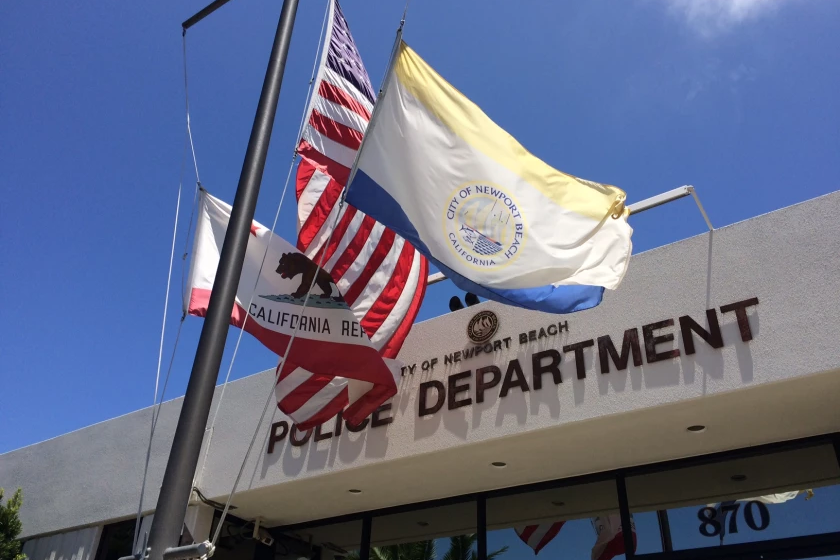THE BELL CURVE:
- Share via
For my generation, which dates back almost to World War I, there are two events that we can recall vividly on demand and in detail.
That means where we were and what we were doing when they took place. One is the assassination of President Kennedy. The other is the Japanese attack on Pearl Harbor that drew the United States into World War II.
The 67th anniversary of the latter took place Sunday. For all of those intervening anniversaries, the same question has been asked my generation almost as ritual: “Where were you when…”
And the oft-repeated tales are trotted out, now often dressed in the hyperbole of repetitious storytelling, as creative as advancing years allow.
And as happens with living history, it is beginning to tail off into legend and finally into school textbooks as those who lived those days — now known unwillingly and mostly embarrassed as the Greatest Generation — leave the scene.
There was nothing unusual about my story, but the commonality of it was its unique feature.
With the possible exception of the Civil War, never had a citizen army been created so quickly or universally, nor had a society produced a potent war machine so effectively as the U.S. in World War II — all the more remarkable since we were ill prepared from years of isolationism to fight a war. Any war, let alone a global conflict.
I was a junior at the University of Missouri when Pearl Harbor was attacked. I was in the midst of lunch at the boarding table where I took my meals when a member of our group left early, then came bursting back to shout from the doorway, “Get in here quick.”
He was standing over a blaring radio where an announcer, his voice breaking, was describing an air attack on our Pacific fleet, anchored in Pearl Harbor. The carnage was dreadful, and members of Congress were being rounded up to declare war on Japan and Germany.
We were told that President Franklin Roosevelt would address the nation soon with what turned out to be his “day of infamy” speech.
And so it began.
We were two weeks short of Christmas vacation, and classes suddenly became redundant as we milled about the campus in small, passionate clusters.
The boys mostly talked about what branch of military service we would join. And the girls — many of whom would help build the materiel of war — listened and wondered what their roles would be.
As a Land Grant college, Missouri required a year of Reserve Officers Training Corps for all of its male students. It says something about our degree of preparedness that the ROTC unit at Missouri was horse-drawn field artillery. Most of us spurned the commission that ROTC would offer. We were thinking airplanes, not horses.
My home was in Fort Wayne, Ind., and I arrived there a week after the Pearl Harbor attack determined to join the Navy Air Corps for a variety of 20-year-old reasons only marginally connected with patriotism.
On the first day home, I stood in line at the local post office to offer my service to the Navy recruiters assembled there. I was told that because I was underage, I would have to get my father’s approval.
And that came with difficulty.
He wanted me to finish my junior year at college before I enlisted, and only when I convinced him that my head would be elsewhere and the classroom useless did he consent to sign on. So I enlisted and was sent to Chicago for a physical examination, which I blew on my depth-perception test.
I took this as a temporary setback and returned to school where I ate a ton of carrots which — according to legend — would improve my eyesight, then hitched a ride to St. Louis to enlist again.
In addition to the carrots, I had figured out a way to beat the depth perception test, and it worked admirably. I was in. I would take care of my depth-perception deficiency somehow before it was tested by landing on an aircraft carrier.
As it turned out, I got to finish my junior year after all; I wasn’t called to active duty until I got orders to report to Iowa Pre-Flight in May 1942.
Before I left Iowa for primary flight training, we had turned back the Japanese invasion of Midway Island and sunk four enemy carriers there, but at a terrible cost in Navy pilots and aircraft. One entire torpedo bomber squadron was wiped out, and several dive bomber groups suffered heavy casualties.
So the need for new pilots to replace those we had lost was reflected in a powerful sense of urgency as we finished the transition from training to the business of war.
That’s where the remembrances of Pearl Harbor segue into the following three years that ended with the unconditional surrender of both Japan and Germany.
And the men who once sat around that boarding house table and survived the war that started on that day returned to their campuses to pick up the pieces of their lives. And to answer so many times in the years that followed “where they were when…”
And if you would like to know what it was really, really like for the college kids who became men and women in those years, check out a book at the library called “The Last Convertible,” by Anton Myrer.
JOSEPH N. BELL lives in Newport Beach. His column runs Thursdays.
All the latest on Orange County from Orange County.
Get our free TimesOC newsletter.
You may occasionally receive promotional content from the Daily Pilot.









